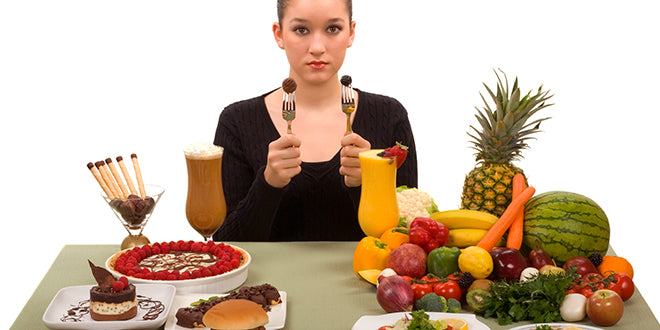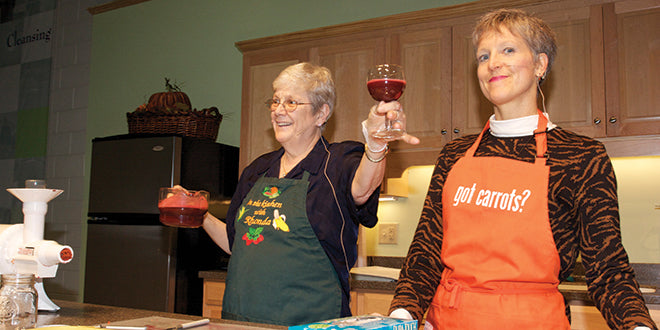In last week’s Health Tip we asked “What Does A Healthy Family Look Like?” Under that heading I asked our readers to evaluate: “What is the Size of Your Family.” I wasn’t looking for the number of people in the family, but rather how large family members were and how many pounds they were carrying. In this week’s Health Tip I want to share some things that cause a family to be overweight and then show how that family can take control of their overweight condition. We are going to begin by taking a look in the kitchen to see what a person is eating – which is the primary cause of excess weight.
There are certain foods that contribute to weight gain and there are other foods that contribute to a slim and trim body. Anything containing refined sugar should not be found in the kitchen of a home that wants family members to be slim and trim. Where do we find refined sugar in the average kitchen? Let's examine the weight gaining foods first.
Soft drinks – The average 12-oz can of soft drink contains approximately 11 teaspoons of sugar. If a person were to consume just one 12-oz can of soft drink each day for one year, the sugar in that soft drink would cause their body to gain approximately 15 pounds of weight. Now think of all the sugar in those liter bottles!
Carbs - bread, cakes, cookies, pies, pastries, cereals, jams, jellies, candy, and even gum – Almost every one of these items contain large amounts of refined sugar, a substance that not only causes weight gain but also psychological problems. Almost every manufactured product on the grocery store shelf contains some form of refined sugar.
Artificial sugars – These “sugar free” products are not only dangerous in themselves, but cause an increase in appetite, thereby defeating the very reason many people use them. Refined sugars and artificial sugars could also be classified as addictive drugs.
Refined Grains – Refined grains, when ingested, turn rapidly to sugar. Almost all breads, donuts, cookies, pies, pastries, and most breakfast cereals are made with refined grains. When a person consumes these products they are getting a double weight gaining whammy – not only from the sugar in the product, but also from the refined grain.
Fat – All animal products contain fat and the fat in these animal products contributes to excess body fat. That chicken many people think is less fattening than a beef patty is loaded with fat. Remove the skin from the breast of the chicken and broil it, and the percentage of fat remaining in that chicken breast is still 20%. Beef contains some 20 to 40% fat, and park is 40 to 60% fat. When you cook these animal sourced foods it is impossible to get all the fat out. It's not hard to imagine where that remaining fat ends up. Other sources of fat include milk, cheese, hydrogenated oils, lard, and the fats found in deep fried foods such as doughnuts, French fries, fried fish, chicken nuggets, potato chips, etc. These fats not only contribute to excess weight, but also clog the arteries causing high blood pressure, need for by-passes and stents, and often lead to a heart attack or stroke.
What's In Your Kitchen?
As we enter the kitchen, we are going to open various doors in that kitchen to see what we see behind them. We are going to be looking for foods that contribute to weight gain behind those various doors. The Freezer Door – The first thing that jumps out as we open the freezer door in many homes is that pint, quart or half-gallon of ice cream or maybe some popsicles. Ice cream not only contains lots of refined sugar (approximately 37%), but is also loaded with fat. What else can we find? A stack of beef patties or package of hot dogs? Did you ever notice the fat that drains from these patties or dogs as you grill them? Did you ever consider what happens to the fat that does not drain from these items? That fat is taken into the body and that fat adds to your body fat. Maybe you have a frozen pizza in there, covered with cheese, pepperoni, sausage, and hamburger meat. Some of the pizzas being sold today even boast “double cheese” and some even have cheese baked into their crusts.
The Refrigerator Door
As we open the refrigerator door what might we see? A six-pack of soda or beer? Are you aware that both of these contribute greatly to weight gain? So do fruit juices. Most of them are sweetened with refined sugar, which contribute to weight gain. Even 100% fruit juices are loaded with natural sugars that can contribute to weight gain. Then there are the sugar laden Kool Aid, Gatorade, and other sport drinks. Let me emphasize again that milk and cheese are huge sources of animal fat. Cow milk and cheese are not only highly fattening, but possibly the most dangerous items in the refrigerator. And beware of the “low fat” deception, allowed by government, found on the label of a container of milk. The percentage is based on weight, not as a percentage of calories. As a percentage of total calories, a container of 1% milk is actually 26% fat, and 2% milk is 37% fat.
The Pantry
Is that a box of macaroni and cheese I see sitting on the pantry shelf (a very fattening food) and are there bags of sugar and white flour, boxes of cookies, crackers, and refined grain pastas? In most pantries there is also a container of refined salt. Refined table salt causes the body to retain water which can also contribute to weight gain.
What Does The Menu In Your Restaurant Look Like?
For a moment, let’s look at what is being served in fast food restaurants. Take a typical fast food meal: animal flesh and cheese between a refined white flour bun, deep fat fried potatoes, and a sugar-laden soft drink. Other items might include deep fried chicken nuggets or a deep fried chicken or fish patty on a white flour bun. Have you ever considered the size of the patrons in an all-you-can-eat buffet restaurant? Yet even in the finest restaurant there is a meat entrée, rolls and sugar desserts, and the salads usually have cheese and bacon bits added. All fattening foods!
Move Your Body
Failing to exercise on a daily basis encourages weight gain and discourages weight loss. The basic formula for weight gain and weight loss is this: consume more calories than are burned, and the body will gain weight. Burn more calories than are consumed, and the body will lose weight. Consequences
- Children who are obese are twice as likely to die before age 55.
- Obese teen girls are more likely to die between the ages of 35 and 56.
- Because of an unhealthy, fattening diet, the average young adult is now facing increased risk of heart disease, Type 2 diabetes, stroke, and cancer.
- But it’s not just the young people facing these problems. Heart disease is the number one cause of death among adults. Cancer is a close second. Type 2 diabetes is rampant and low bone density is becoming an increasing concern.
Discouraged? Don't Be! Some reading this might at this point be so discouraged they are ready to throw up their hands and say, “There is nothing my family can eat that will not contribute to their weight gain!” Ah, but there is! It is called The Hallelujah Diet. For nearly 20 years, tens-of-thousands of folks from around the world have written to share what happened when they changed their diet. When they switched from the unhealthy SAD foods to The Hallelujah Diet, they not only lost weight but were able to maintain that weight loss while eliminating many other physical problems. Some of the weight losses have been dramatic.
In January 2008 one gentlemen adopted The Hallelujah Diet and lost 206 pounds by October of the same year. Another gentleman in Texas lost 320 pounds and proclaimed “I’m not half the man I used to be.” Several years ago I taught a class titled “Biblical Nutrition 101” in the church Rhonda and I were attending at the time. By the end of the six-month class, the 32 participants who adopted The Hallelujah Diet lost a combined total of more than 700 pounds.
A recent poll on our website asked people if they had lost weight on The Hallelujah Diet. Of 240 who responded, 166 (or 69%) reported a weight loss. That is phenomenal!
Next week, the good Lord willing, we will share ideas to replace those fattening foods in the freezer, refrigerator and pantry - foods that will help a person lose weight, obtain optimal weight, maintain that weight, and assist the body to rid itself of most other physical problems. We will also share what a "Hallelujah Kitchen" looks like and provide a simple exercise program that will assist in helping a person obtain and maintain their weight goals.








